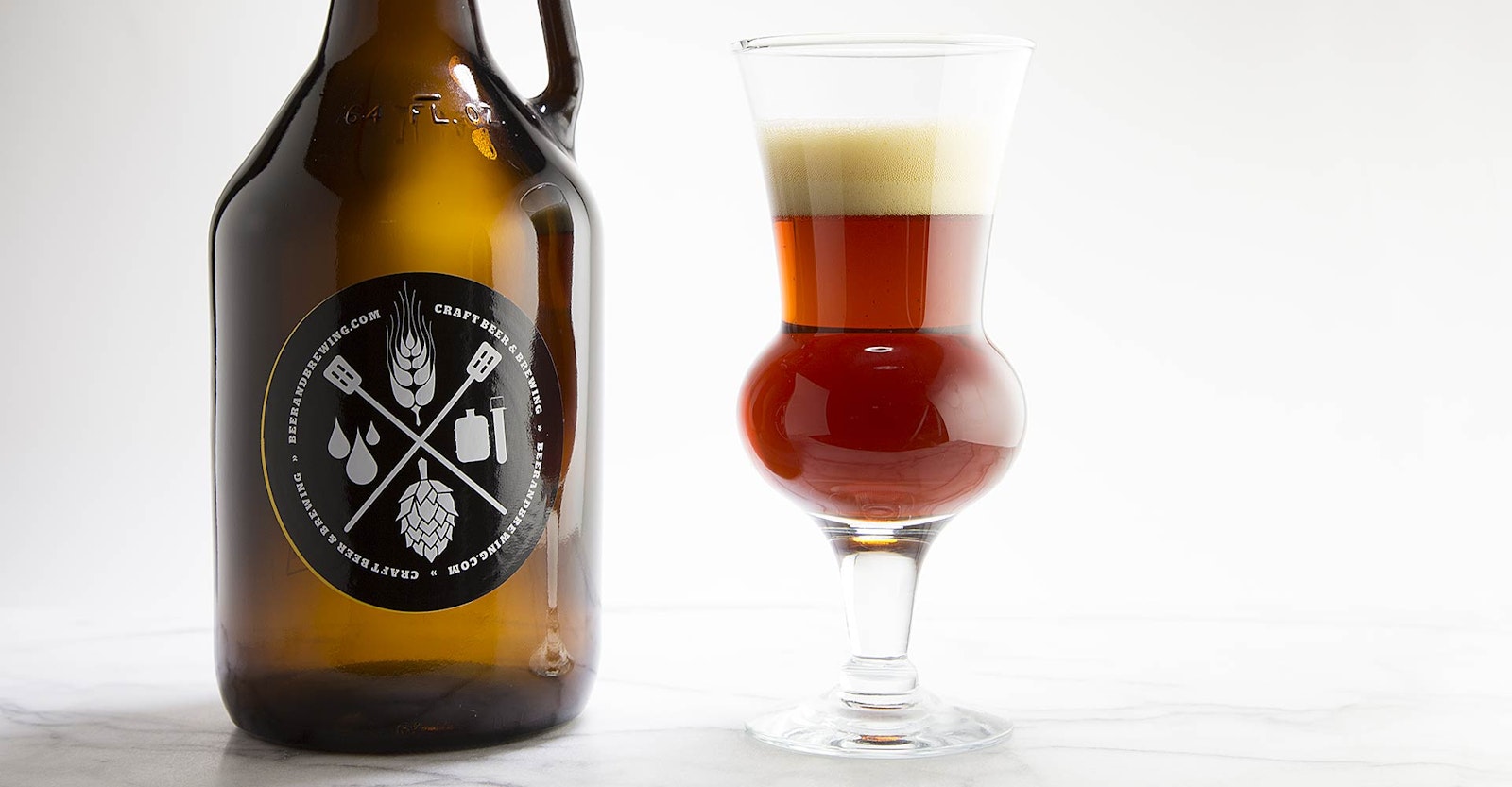You never forget your first.
In this case, I’m referring to the first beer I made with a starting gravity higher than 1.100, which was a Strong Scotch Ale named Kopf Spalten (Head Splitter) that won a medal on its first trip out…and that I didn’t even like drinking. It was too heavy and sweet, and while it did just fine in competition, its scores didn’t really start to improve (and I didn’t really start to like drinking it) until I was able to balance out its more extreme elements while also preserving its prominent flavors and complexity. In that process, the starting gravity fell lower than 1.100, but I learned that bigger isn’t always (and, maybe, isn’t even usually) better.
Style
I suppose it shouldn’t be surprising that a beer style that goes by the alternate name “Wee Heavy” is somewhat contradictory. Scottish ales are, to say the least, capable of really showing their range. One of the strongest, most intense beer styles (Strong Scotch, or Wee Heavy) also happens to be in the same regional family as one of the lightest (Scottish 60/-). What’s really remarkable is that despite the massive difference in their gravity, they actually have quite a lot in common! Both feature some kettle caramelization notes (whether derived from actual kettle caramelization or not), low hopping levels in both bittering and flavor, and some noticeable-but-restrained esters.
What Strong Scotch Ale adds is a much richer malty background that acts as a balance against its much-higher ABV. It’s also a sweet beer, but shouldn’t be excessively so, which can be a tough mark to hit.
Ingredients
We’re going to start with a whole lot of Maris Otter: 15 pounds (6.8 kg), to be precise, to give us a good biscuit-flavored base malt flavor.
Then we need to add our rich, malty, sweet-seeming flavors: one pound (454 g) of Briess Special Roast (a 40–45L crystal malt that’s comparable in flavor to British crystal but much heavier on the bread and lighter on the raisin), and half a pound (227 g) each of Melanoidin malt and Aromatic malt. These are going to mimic the kinds of rich Maillard-derived flavors we’d get out of kettle caramelization. If you decide to go that route instead, then dump these malts out entirely and just replace with more Maris!
Finally, we add to the grist a couple of darker malts to give us a little bit of drying roast and some deep-crystal dark-fruit flavors: half a pound (227 g) each of Briess Extra Special Roast and pale chocolate (or chocolate rye). These should net you out at about 1.097 as an original post-boil gravity. NOTE: If you even look at that peat malt, we can’t be friends anymore.
Hopping is barely there, so use any hops at all for the 60-minute addition (30 IBUs worth) and then add half an ounce (14 g) of Fuggles at flame-out, for just a little earthy, mossy aroma.
Finally, I don’t think there’s a better yeast for Scottish-Irish beers than Wyeast 1084 (Irish Ale) yeast, and it’s plenty alcohol-tolerant while producing some nice berry esters and rounded malt flavors.
Process
As previously noted, we’re skipping the kettle caramelization process. You’re more than welcome to go that route yourself, but I’ve never found it to be worth the trouble, and when I would do it, I would get irritable because no one would notice. Meanwhile bulking up the melanoidin richness in the grist gives us a more easily adjustable tool to get just the malt complexity we want. Feel free to tinker with those amounts, to your preference.
Mash a bit low here to help ensure your beer is nicely fermentable (149°F/65°C for 75 minutes is my standard). There’s a lot of unfermentable sugars being added here, and if you miss your mash temperature high by a couple of degrees you can end up with a very thick, sludgy beer. Also, be sure to pitch a bit more yeast than you think you’ll need and oxygenate thoroughly: excessive esters caused by yeast stress or unhealthy yeast–produced phenols will be surprisingly obvious (and highly detrimental) to your flavor profile. Those flavors have more places to hide in hoppier beers, but this style is almost all malt complexity.
Finally, ferment low and slow. Wyeast 1084 seems quite happy at 60°F (15°C), which is where I hold this beer for at least its first full week, and then I let it rise to something in the mid-high 60s Fahrenheit (low 20s Celsius). Diacetyl shouldn’t be a concern, but you do want to help drive along a full attenuation, so a static fermentation isn’t recommended. When it finishes, you can carbonate to about two volumes: you want more than the usual pétillant Scottish carbonation, to help fill out the mouthfeel and scrub the palate a bit: win-win.
In Closing
Earlier versions of this beer were higher in alcohol and used more of the middle-high crystal malts that I relied on for so many British Isles beers early on in my brewing life. When I reduced the OG and moved more toward the 20–40L crystals and up to the 130–200L dark crystal/light chocolate malts, it really took off.
And, again: no peat malt. I’m serious.
Slainte!

